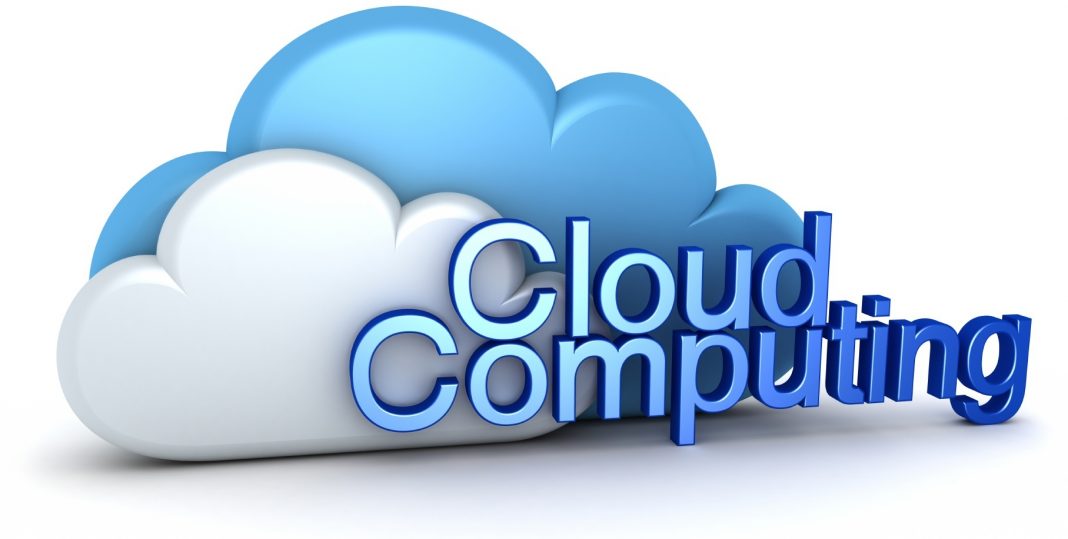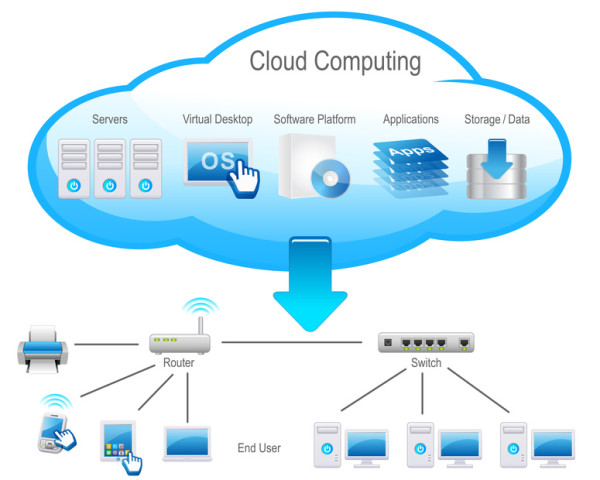
The term “cloud computing” is probably one of the most commonly mentioned buzz words in technology today. Many people misunderstand its meaning and it often brings to mind data literally being thrown up into the air which in turn creates distrust in the concept.
The reality is that cloud computing has been around for many years but has not gone by that name until recently.
What is Cloud computing?
At its core cloud computing is simply the idea of pooling together physical computing resources in order to create a scalable platform that can deliver services over the Internet.
An example of cloud computing in practice
A good example of cloud computing in practice is popular webmail service Hotmail – this is an email service that is being provided by Microsoft over the internet. Rather than having an email application stored on the local computer it is stored remotely and then accessed through your favourite Internet browser.
Scaling the service with cloud computing
If Hotmail were to scale this service and provide it globally (which they do) then it could get very messy as they started to require more and more servers in order to provide the service to an ever growing customer base. With cloud computing technologies they are able to pool all of these servers together to form a single resource. To all intents and purposes this new resource would appear as a single computer making it very easy for developers to work with and also for the end user to interact with. The great benefit of this cloud computing platform is in its scalability and its redundancy – if the system is running low on resources then additional servers can simply be added to the system and will be automatically added to the pool.
In addition to the system is made extremely robust by cloud computing because as well as being able to easily add resources to the pool, servers can also be removed just as easily – even if this is due to hardware failure – and the pool will not suffer because the data that is stored on it is saved across multiple servers within the pool.
Software defined computing
A name that better describes this technology is software defined computing and it is the real technology behind the cloud. Rather than having the hardware itself being responsible for resource management it is the software that manages all of the servers in the pool and this provides much greater control and flexibility over the system.
Whilst the pooling of computer resources that embodies cloud computing has been around for many years, software defined computing is really in its infancy and it is a technology that is now being replicated in many different areas of computing including storage, networking and infrastructure.
As these technologies are developed further it is likely that the infrastructure behind the Internet and these cloud servers will expand exponentially. This will enable all types of services to be delivered over the Internet and will most likely change the way that we interact with and use computers.
Already we are seeing many more services moving to this model for delivery.
How cloud computing is changing the enterprise
These technologies have already changed enterprise IT – where systems used to consist of mostly on site infrastructure many companies are now moving their systems to the cloud in part or in totality.
This does not just include large enterprises but even small businesses are following the same path. Email is a great example where a large percentage of companies are now moving to cloud based services such as Microsoft office 365 for email management.
Will these technologies affect the retail market?
The retail sector has already dipped its toe in the water in the form of cloud based file storage solutions such as Dropbox and Livedrive. These two services in particular are extremely popular amongst retail users and are a great example of how these technologies benefit the end user.
Over the coming years it is likely that the home computer will become more simplified – as we are already seeing from devices such as Google’s Chrome Book – and more services will be contained in and delivered via the cloud.
How the cloud will shape our use of technology
As software defined computing expands and our Internet speeds increase it is likely that cloud computing will redefine how we use computers. It is likely that we will log in to a central system from wherever we are and from whatever device we are using. On this central system we have all of our data as well as our favourite applications.
In addition to this new environment, software applications such as office are likely to be delivered on demand. For example of we are working on a design project we will be able to gain access to Adobe Photoshop instantly, do the work required and then close it down again, perhaps being billed by Adobe for the 15 minutes of use.
Virtual office environments
Of course we already have many companies taking advantage of remote workers today but these technologies are likely to change the way in which we work. They will pave the way for a dramatic increase in home workers and remote collaboration. With these technologies in place there will be little need for employees of a company to all travel into the same location to work.
Bitcoin and digital currencies
When you consider the way in which technology is moving and the fact that any type of service can be delivered over the internet on-demand it is much easier to see the need for digital currencies such as Bitcoin. These currencies can be used to process large numbers of transactions at very low cost and that is exactly what will be needed when services can be provisioned, used and then expired in a matter of minutes.


